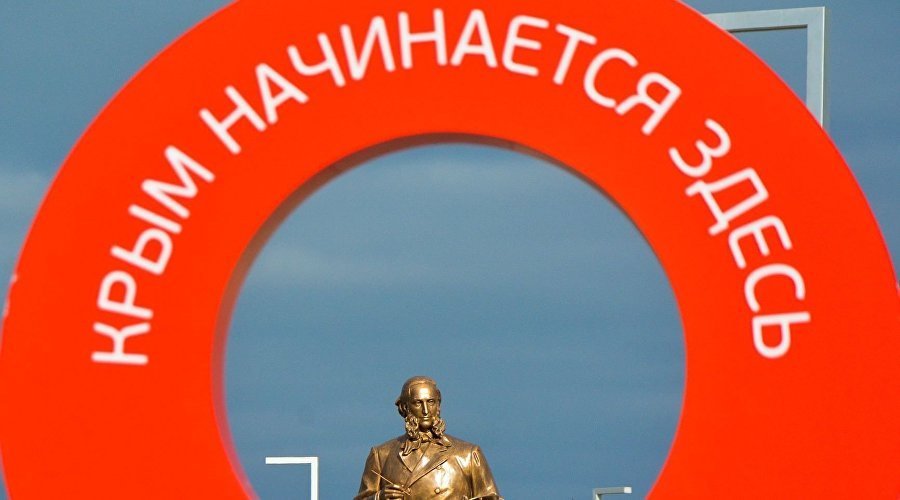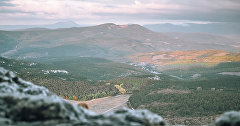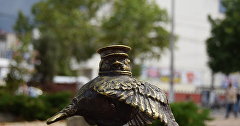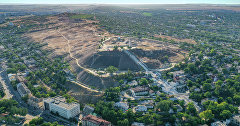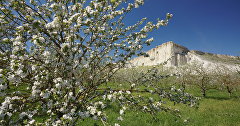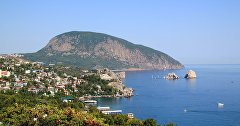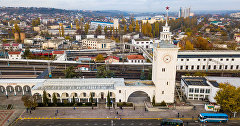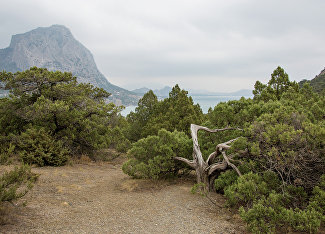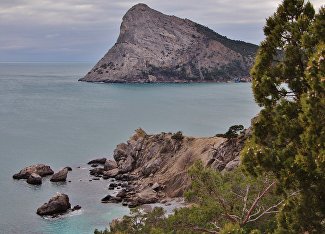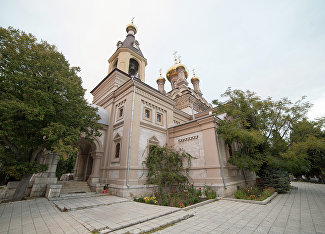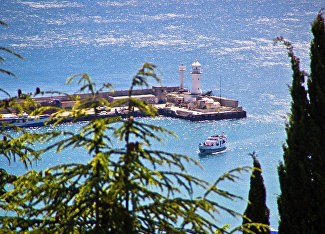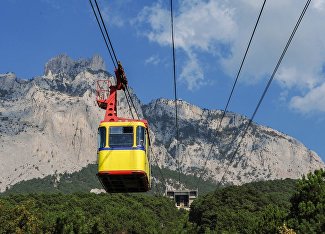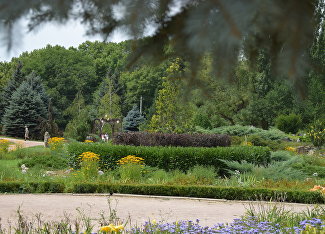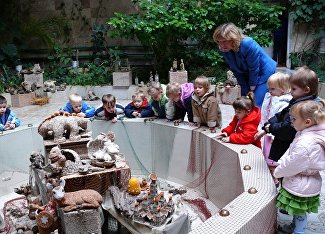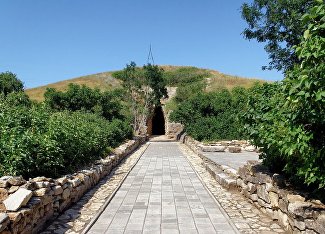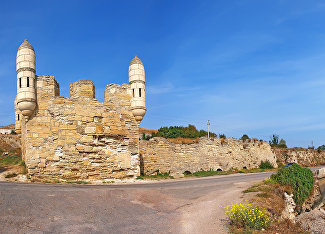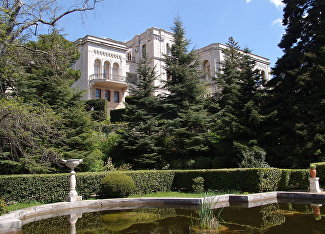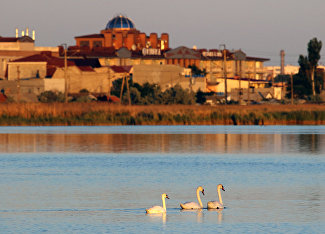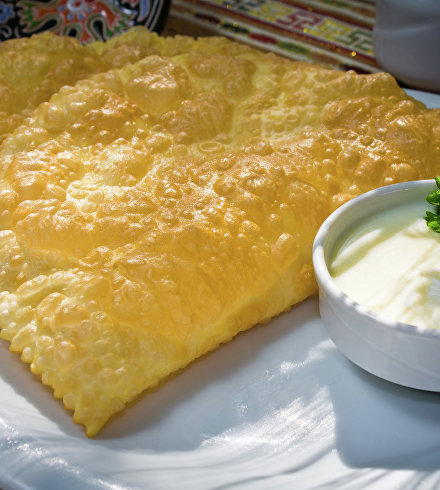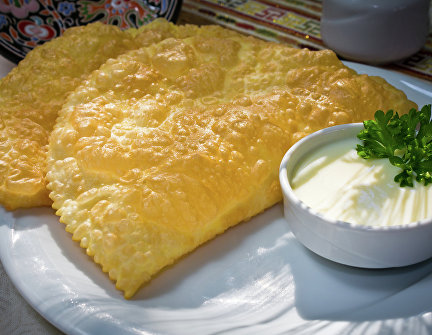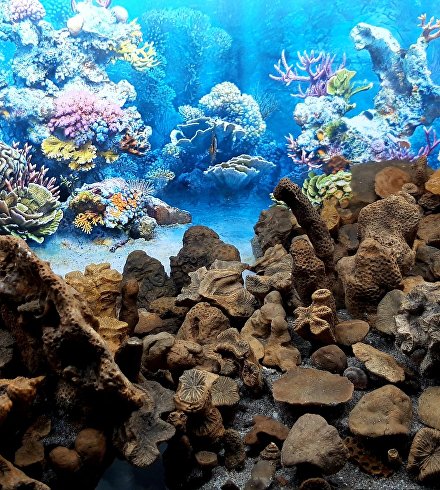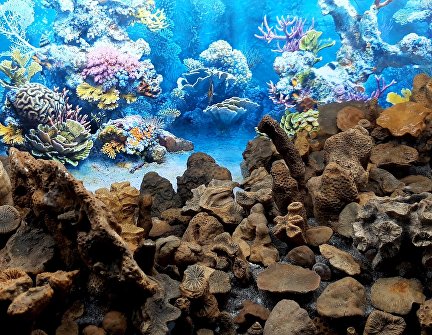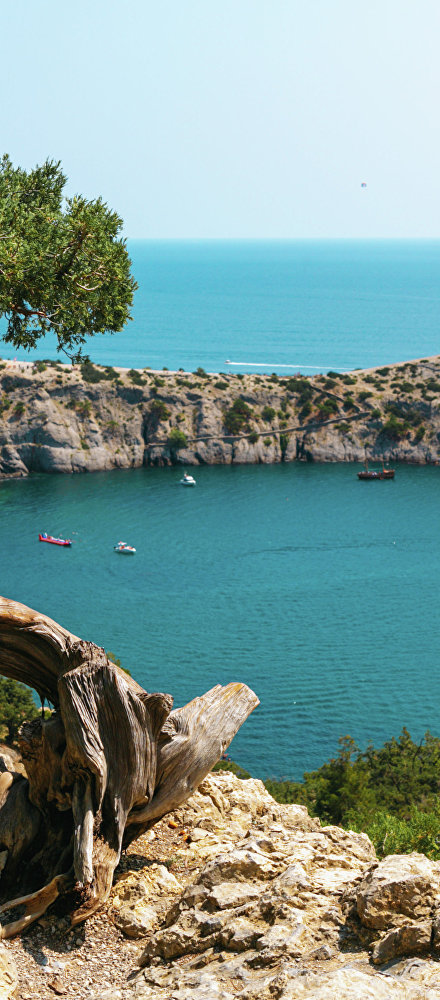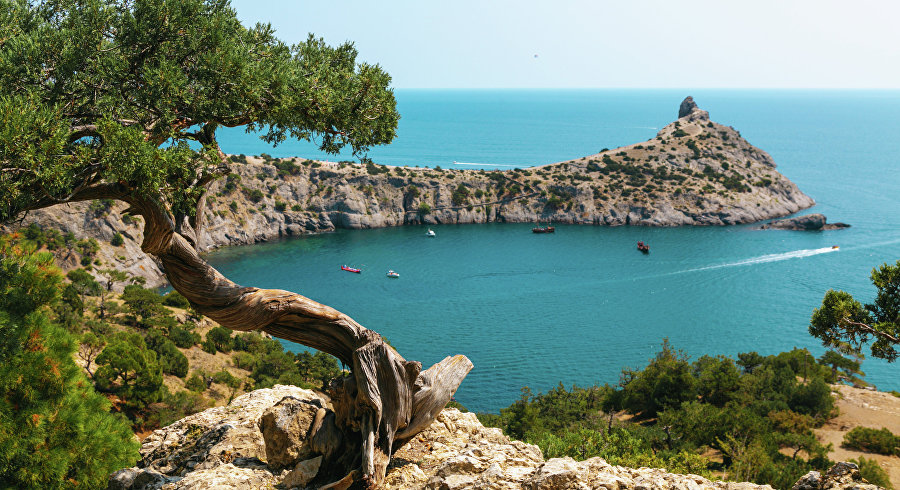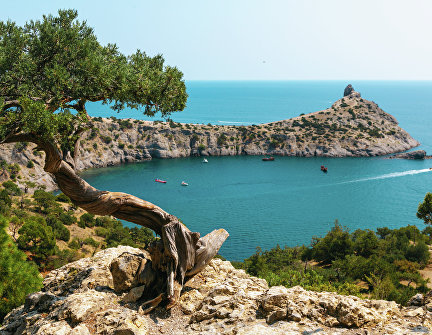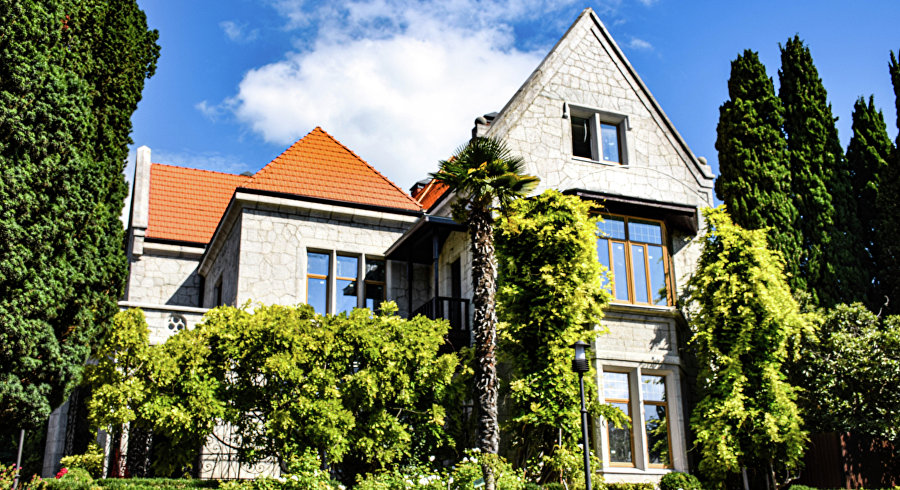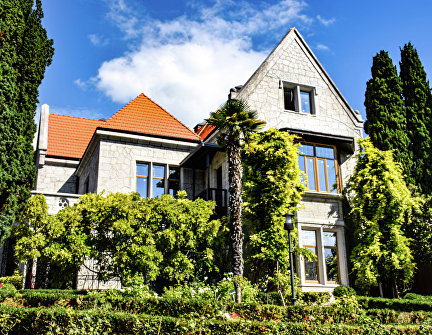On the anniversary of the reuniting of Crimea with Russia, we decided to recall new monuments installed on the peninsula and to whom they are dedicated.
To Polite People
Where installed: Simferópol, Republic Square
Date of opening: June 11, 2016
The monument largely repeats the photographs that spread around the world in the spring of 2014: a girl holds out flowers to a military man, and a cat rubs at his feet, as a symbol of peaceful life. Now these heroes of the pictures − forever cast in bronze − stand next to the building of the Republican Parliament, within the walls of which on February 27, 2014, a decision was made to hold a referendum.
The monument is 2.5 meters high and weighs more than a ton. The author of the composition is the Soviet and Russian sculptor, People's Artist of the Russian Federation Salavát Shcherbakóv.
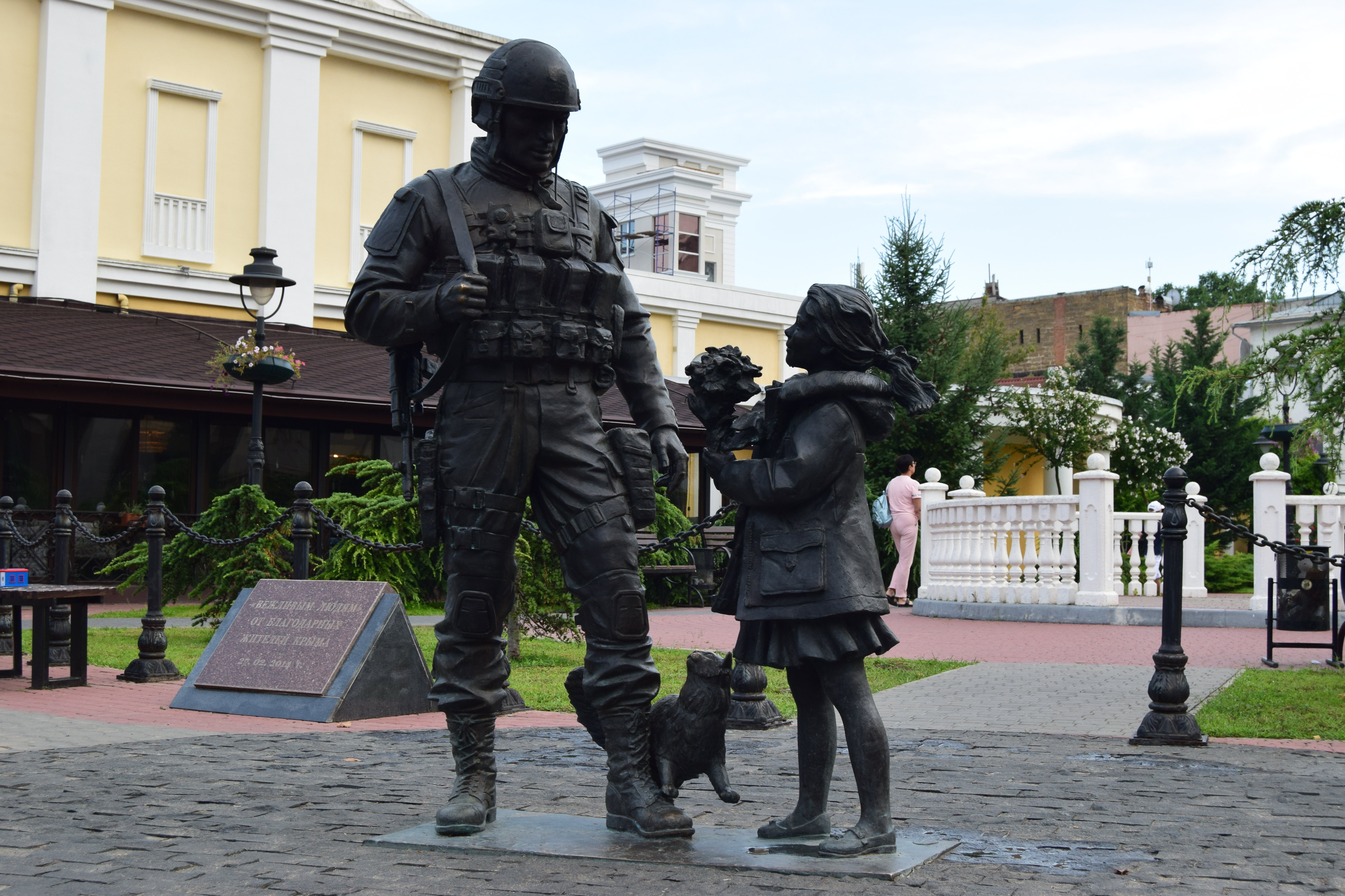
To People's Militia of all times
Where installed: Simferopol, near the building of the Government of the Republic of Crimea
Date of opening: December 30, 2016
The militias played an important role in ensuring public safety during the days of the Crimean Spring. But this monument is dedicated not only to them. It was also dedicated to the memory of those who fought for the peninsula during the Crimean and Great Patriotic Wars.
The composition was installed near the building of the Crimean Government, opposite the Trenyóv park. The author of the monument is sculptor Valéry Klyúchev. A monument was manufactured in the creative workshop of Salavát Shcherbakóv.
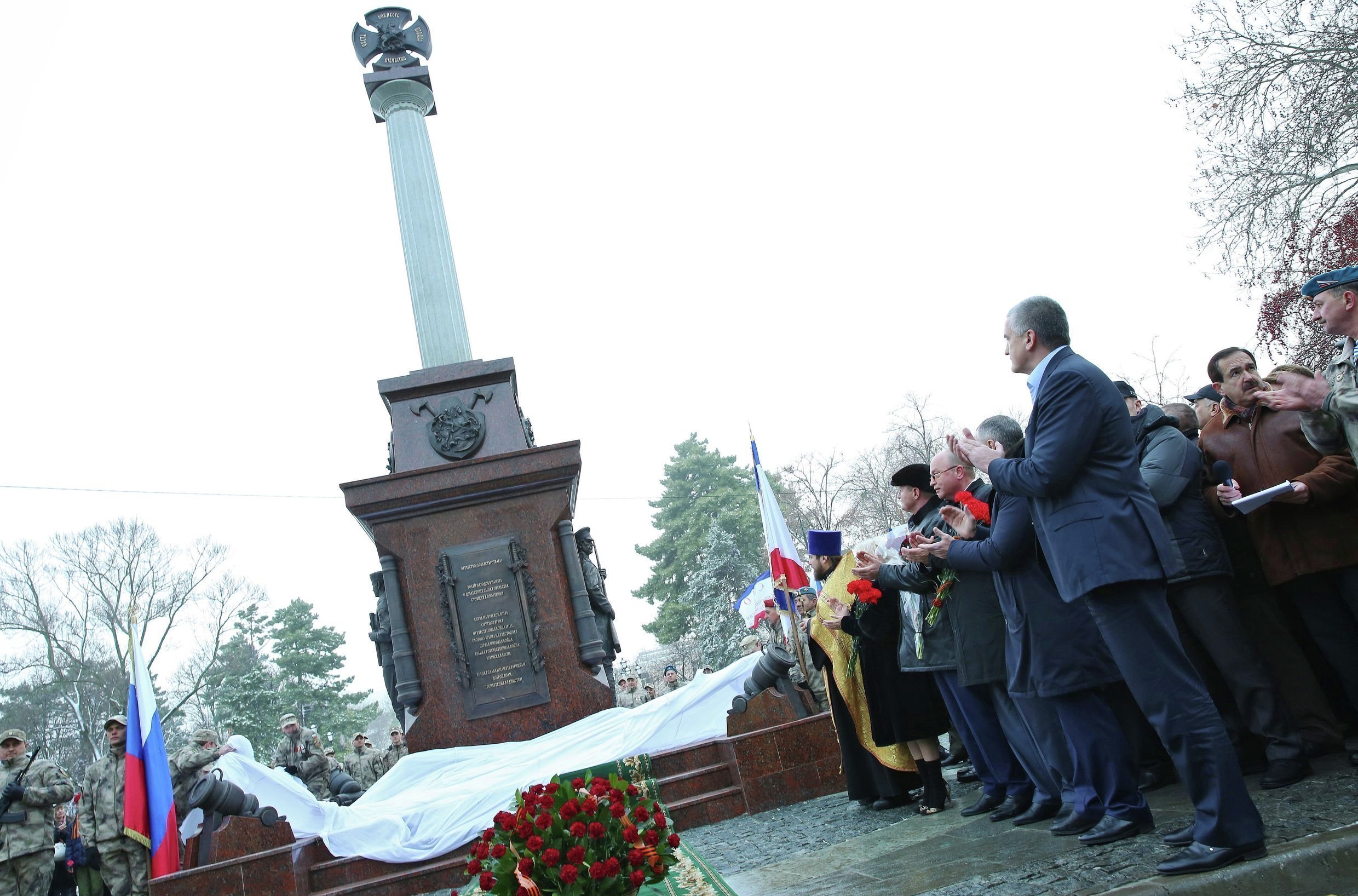
To Empress Catherine II
Where installed: Simferopol, Catherine's Garden
Date of opening: August 19, 2016
Back in 1890, a monument to the Russian Empress was already installed at that place. It stayed there until 1921. And now, after almost a century, the bronze Catherine II "returned" to her place.
The layout of the monument was recreated on the basis of surviving descriptions and photographs of the first monument. At the head of the composition, on a granite pedestal, is the figure of the Empress. She holds a scepter in one hand, and stretches out the other, as if blessing Taurida and the people who came to the foot of the monument. A little lower, on the sides of the pedestal, there are busts and statues of famous figures of the Catherine era − Vasíliy Dolgorúkov-Krýmskiy, Grigóriy Potyómkin-Tavrícheskiy, Alexander Suvórov and Yákov Bulgákov.
The monument reaches 10 meters in height and its weight is about 7 tons. The monument was recreated by Moscow sculptors Konstantín Kubýshkin and Ígor Yavórskiy.
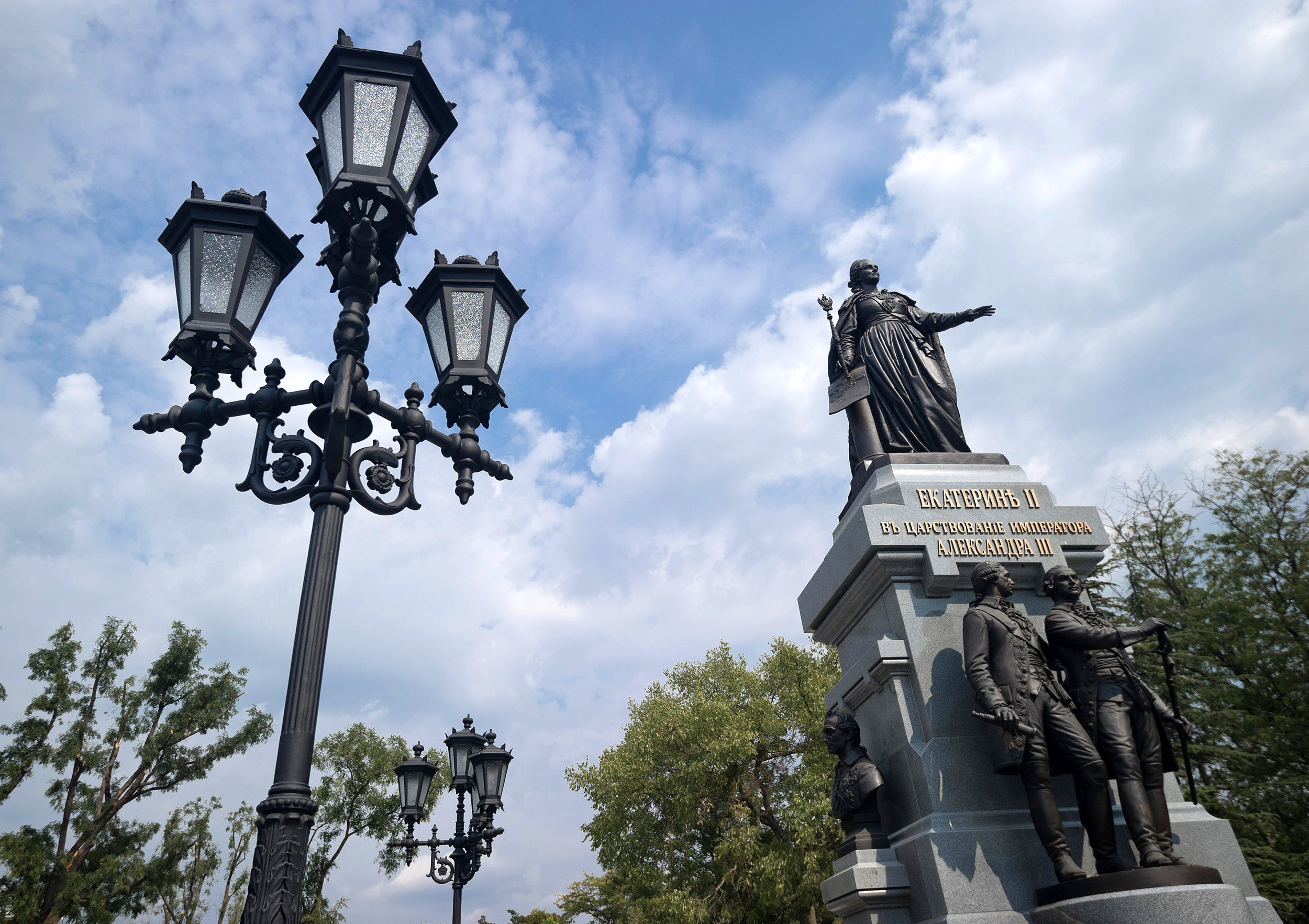
To Emperor Alexander III
Where installed: the town of Livadia, the park of the Livadia Palace
Date of opening: November 18, 2017
The bronze sculpture, almost 4 meters high. The figure is mounted on a marble pedestal, on which the famous saying of Alexander III is engraved: "Russia has only two allies − its army and navy." Behind the figure of the emperor, there is a wall with bas-relief symbols of the time of his reign: the State Historical Museum, the Cathedral of Christ the Savior, the Tretyakov Gallery, the Trans-Siberian Railway, Mosin's rifle, Mozhaiskiy's plane, etc. On top of the wall there is a double-headed bronze eagle.
The monument is on the place where the Small Livadia Palace was located, which the emperor visited many times. In it, he died on October 20, 1894. The building itself was destroyed during the Great Patriotic War.
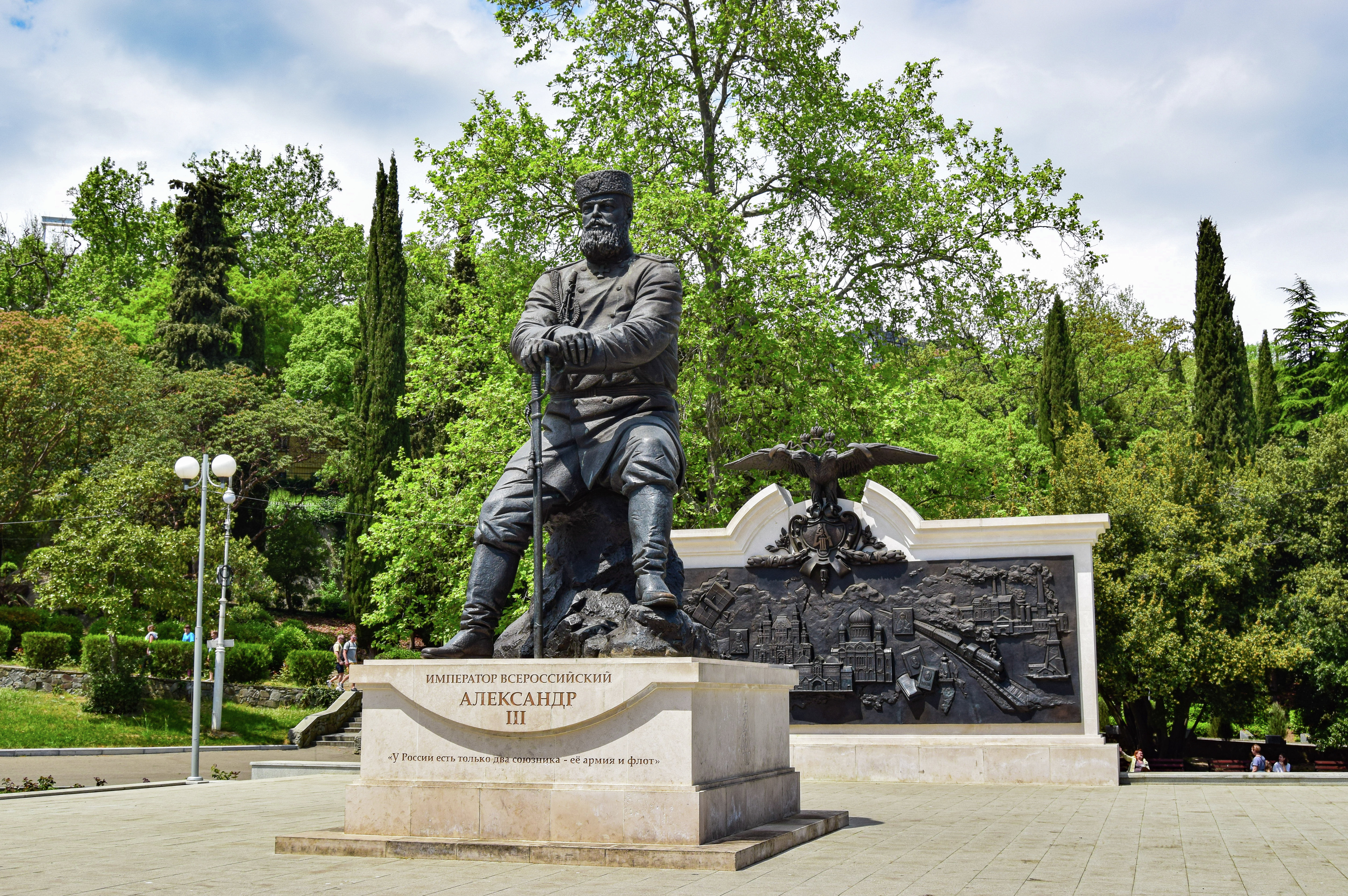
'Time of Crimea' art object
Where installed: Simferopol, Trenyóv Park.
Date of opening: November 4, 2019
This sculpture in the center of Simferopol is a forged sundial made in the shape of a map of Russia. Symbolically, the art object united all 85 federal regions of the country. Craftsmen from all its corners worked to create it: in each region, blacksmiths prepared a part of a forged map − their region with the image of the main symbols and sights. The parts of the composition were brought to and assembled in Simferopol.
The Crimean part of the sculpture is symbolically attached to the map of the country by the model of the Crimean bridge.
Forged composition has dimensions of 10 by 4 meters. More than 300 craftsmen worked on its creation, the works took a year.
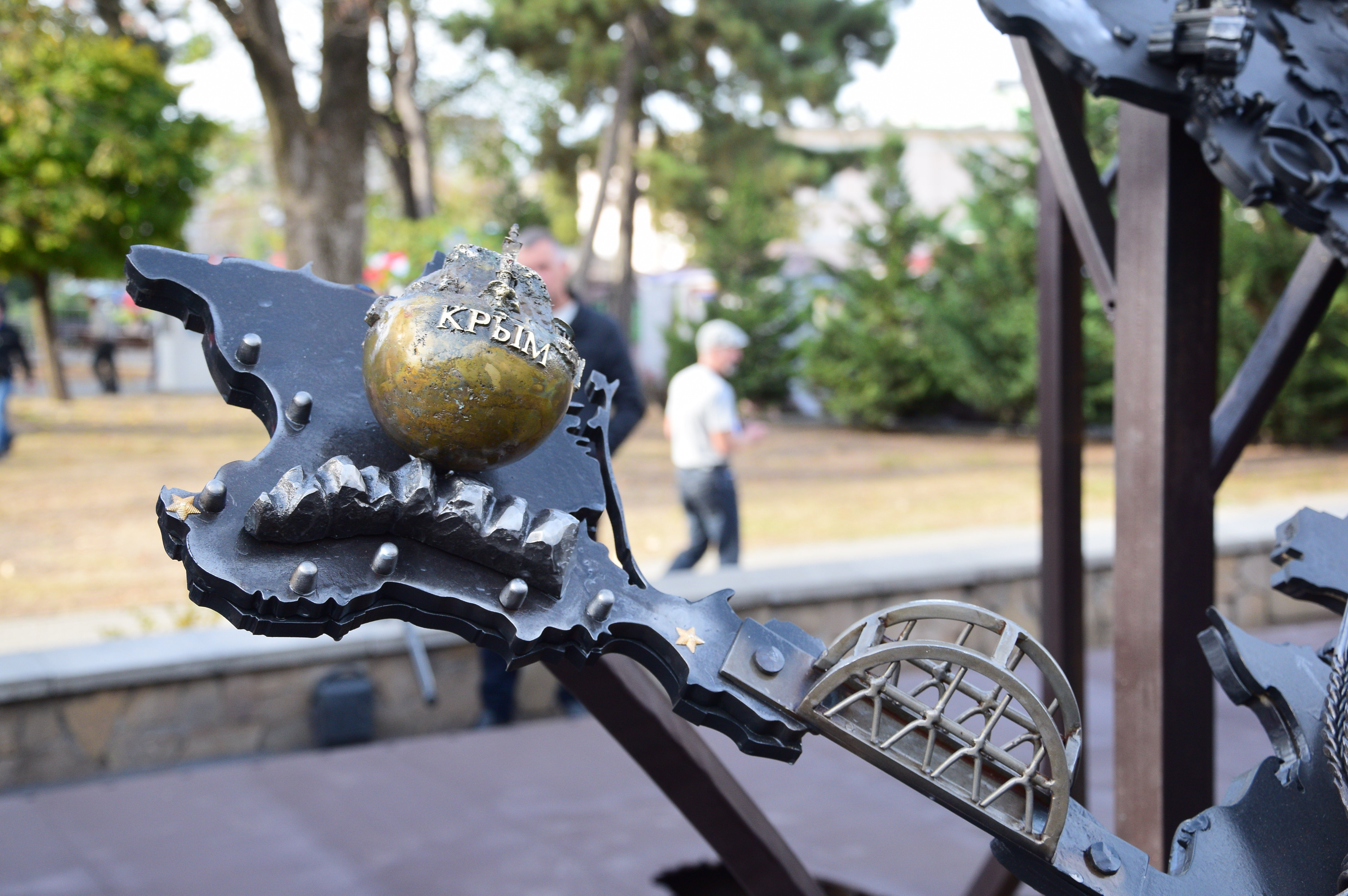
To Prince Gleb Svyatoslavovich and Níkon the Chronicler
Where it is installed: Kerch, the square near the seaport
Date of opening: December 15, 2019
The monument was installed in memory of the ancient habitation of the Russians in the Black Sea region. It symbolizes the events of 1068 related to measuring the distance between two cities − Tmutarakan (the current village of Taman in the Krasnodar Territory) and Korchev (Kerch). It was determined to be 14 thousand fathoms (15 miles / 24 km). In 1792, an ancient marble stone with an inscription describing this event was discovered on the Taman Peninsula. By the way, the distance between cities was measured on the ice when the Kerch Strait was frozen.
The monument was created by sculptor Andrey Gólubev. The inspirers and initiators of the installation of the monument were the residents of Kerch, Simferópol and Moscow, and installation of the monument coincided in time with completion of the Crimean bridge construction.
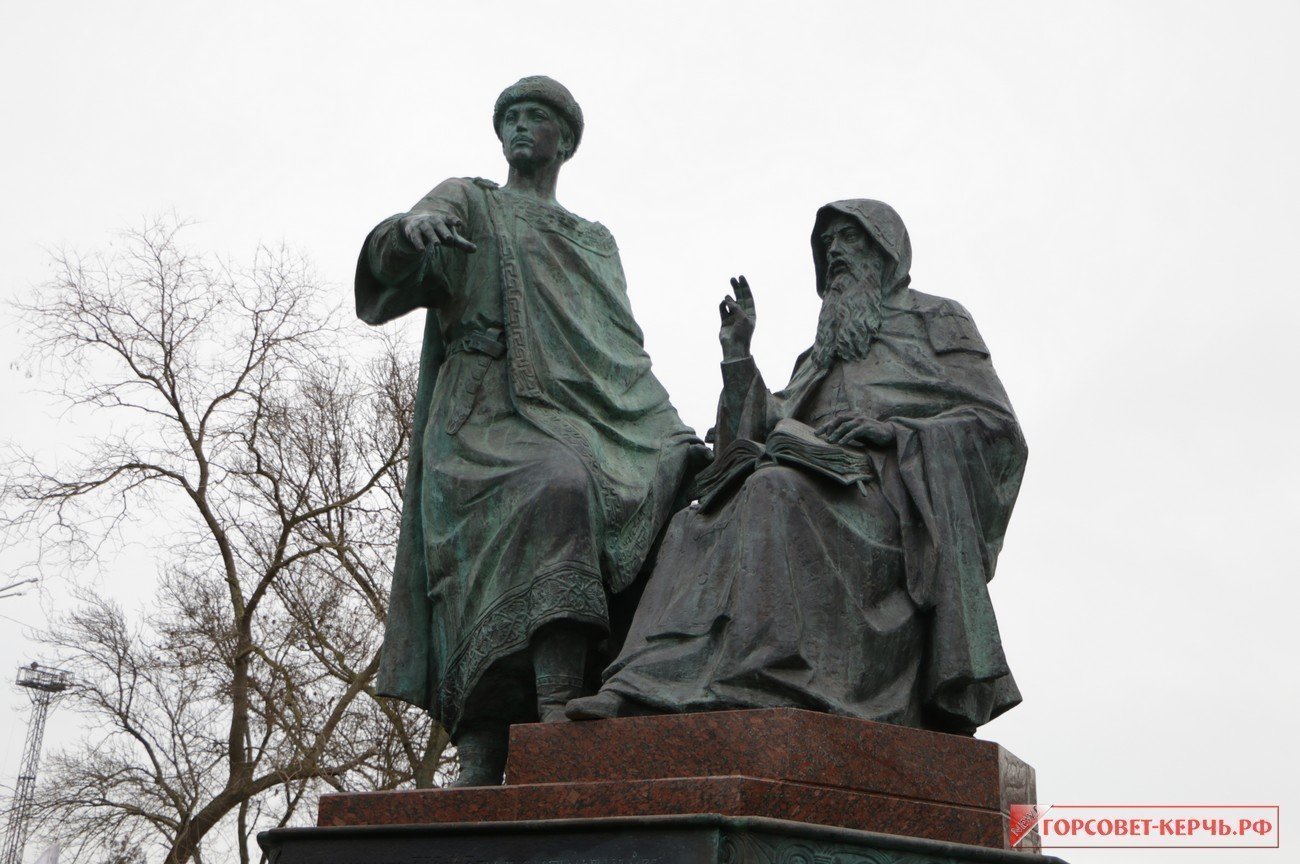
To Amet-Khan Sultán
Where established: Simferópol, the Amet Khan Sultan Square.
Date of opening: October 25, 2020
The monument was opened in the center of the Crimean capital in honor of the 100th birth anniversary of the twice Hero of the Soviet Union, Honored Test Pilot of the USSR Amet-Khan Sultán. This is the only full-figure monument to the ace in the post-Soviet countries.
Amet-Khan Sultan was born in Alupka and graduated from the Kacha pilot school. He fought through the entire Great Patriotic War, ending it in the sky over Berlin. The Crimean made 603 sorties, shot down 30 enemy planes in personal combat and 19 as part of a group. In peacetime, the ace became a test pilot and was awarded the Stalin Prize of the second degree. During his career as a test pilot, he flew 96 types of aircraft and has flown 4237 hours. Amet-Khan Sultan tragically died on February 1, 1971 in a crash of a test aircraft.
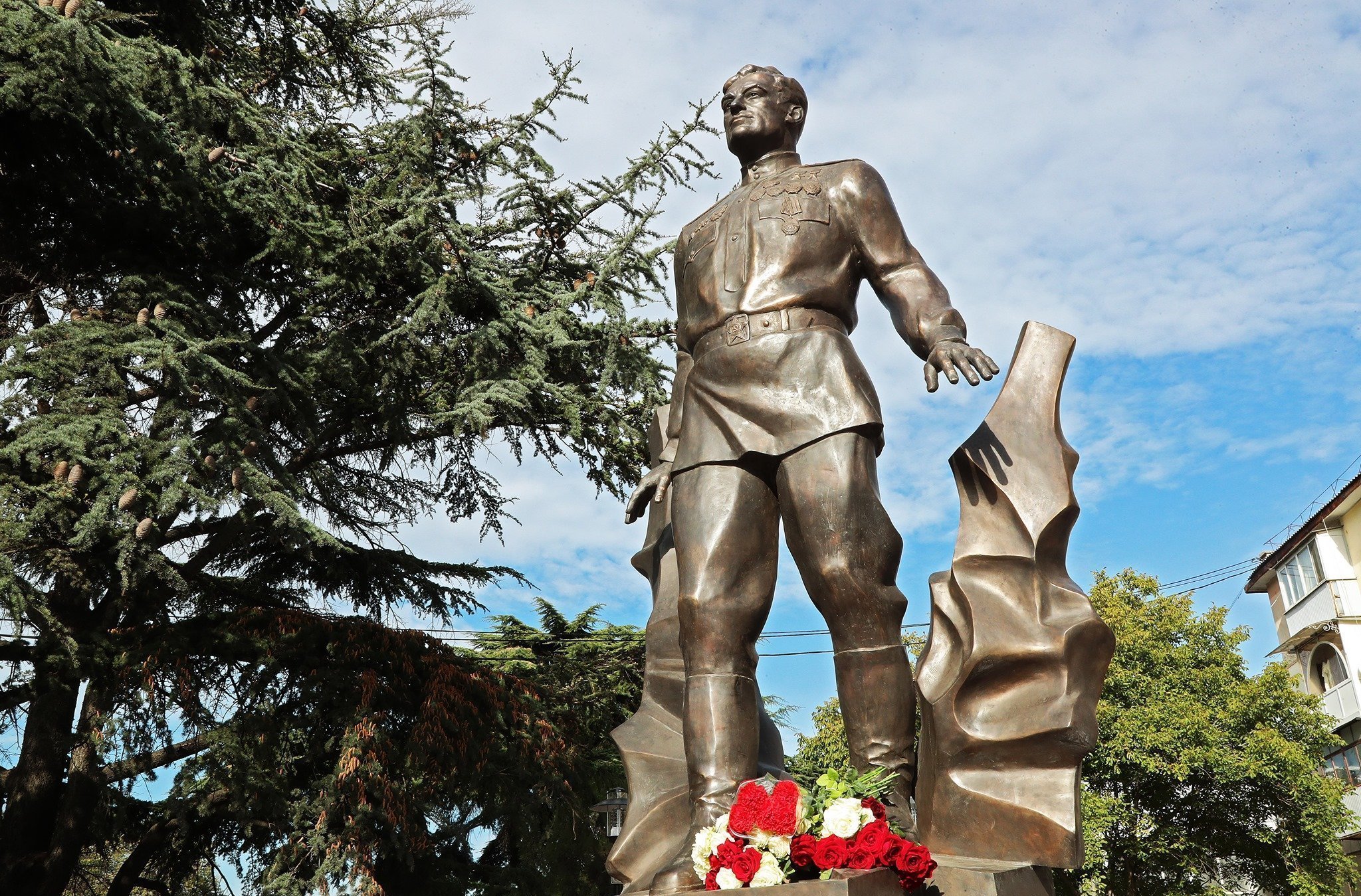
To the future Emperor Nicholas II and his bride
Where installed: Alushta, Seaside Park (Capri Alley)
Date of opening: October 30, 2020
The composition was installed in the resort town of Alushta in memory of the first meeting of Tsesarevich (Crown Prince) Nikolai Alexandrovich and his bride, Princess Alice of Hesse-Darmstadt and the Rhine. It took place in Alushta on October 10, 1894. The future wife of the heir to the Russian throne was heading to Livadia, where later Emperor Alexander III blessed the young couple for marriage. To become the wife of the Russian Tsesarevich, the princess, a Lutheran by birth, was converted to Orthodoxy and named Alexandra Feodorovna.
The monument was created by sculptors Irina Makárova and Maxim Batáyev under the direction of Mikhaïl Vílter.

To Ivan Aivazovsky
Where installed: Simferópol airport square
Opening date: November 9, 2020
In 2019, Simferopol Airport was named after the great son of Theodosia, marine scape painter Ivan Aivazovsky. Therefore, it is not surprising that soon a monument to this outstanding person appeared on the territory of the air harbor. It was created by Salavát Shcherbakóv.
The sculpture is a bust of the artist, mounted on a pedestal. Ivan Aivazovsky's face is turned towards the new airport terminal. The artist holds a brush and a palette in his hands. The height of the monument is 3.5 meters, weight is more than 4 tons.
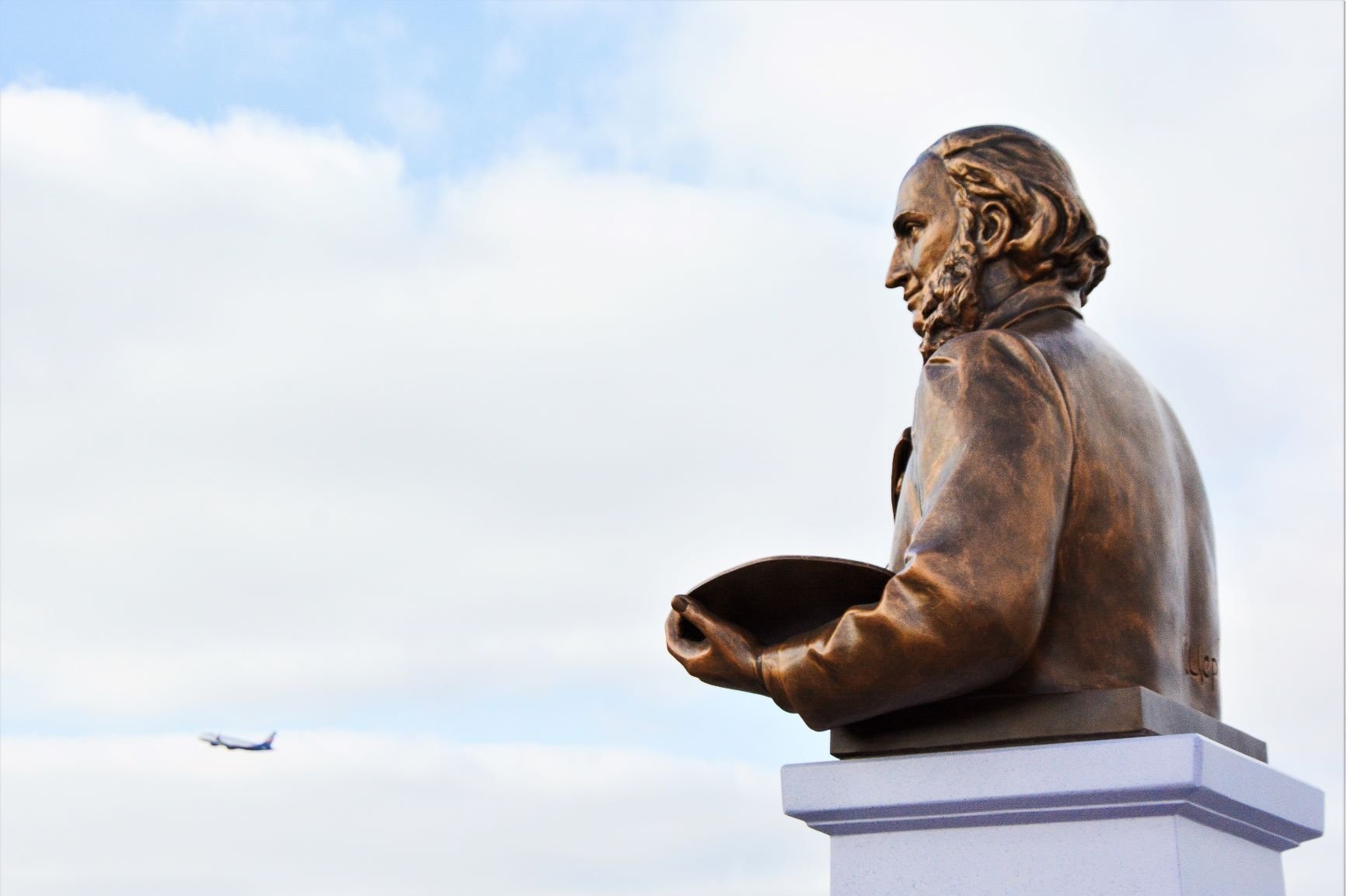
To Pyotr Kotlyarevsky
Where installed: Theodosia, Desantnikov embankment
Date of opening: November 28, 2020
The monument is a figure of the infantry general Peter Kotlyarevsky, astride a galloping horse. This is why the horse has only two points of support − its rear legs. This is the way, the authors wanted to achieve the maximum effect of movement. A Persian Carpet mosaic is thrown over the pedestal under the horse's hooves. This detail in the monument symbolizes Persia as a defeated enemy.
The monument is made of a particularly valuable stone − labradorite. The monument was installed on the initiative of the Russian Military and Historical Society with the support of the Crimean Government. The authors were sculptor Andrey Korobtsóv and architect Konstantín Fomín.
Pyotr Kotlyarevsky (1782-1851) made a career from a soldier to general, distinguished himself in the Russian-Persian and Russian-Turkish wars. Contemporaries called him the Caucasian Suvorov. During the assault on the fortress of Lankaran (Caucasus) in 1812, he was seriously injured, and this cut his career short. From 1838 he lived in Theodosia, where he acquired the Dobriy Priyut dacha. After his death, he was buried in that Crimean city.

These are far from all the monuments that have been installed in Crimea over the past eight years. Busts of Ashot Amatuni, the last hero of the Soviet Union who lived in Crimea, revolutionary Felix Dzerzhinsky, Major General of Aviation Ivan Vilin and other famous people, were also installed on the peninsula. Apart from monuments, art objects are being installed that carry certain meanings. For example, a whole park of unusual sculptures has been installed on the territory of the Tavrida Art cluster in Kapsel Bay near Sudak. Among the most famous are: 'The Man Looking at the Sea', 'The Sun of Taurida', 'Time' and 'Assol'.
